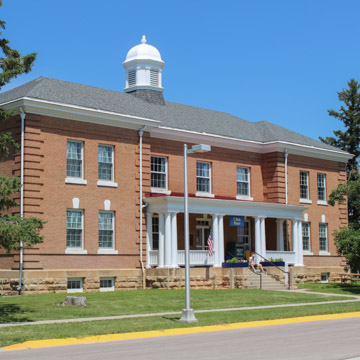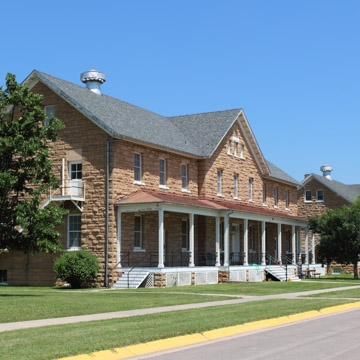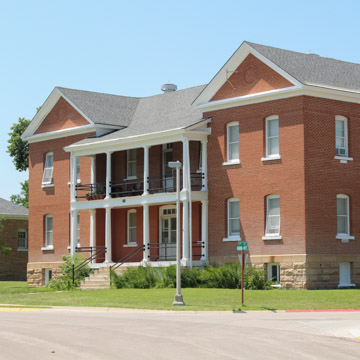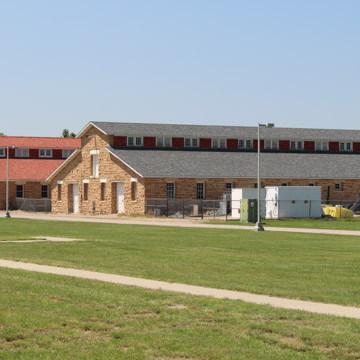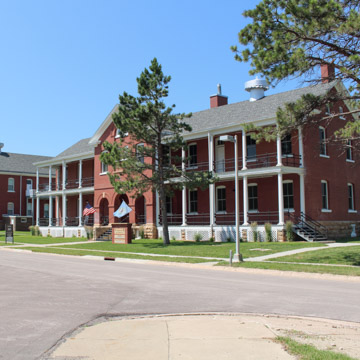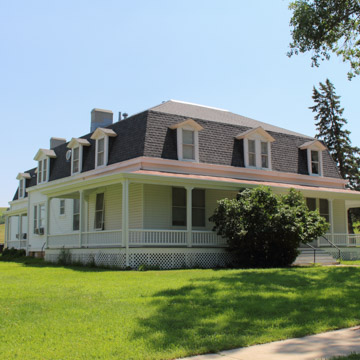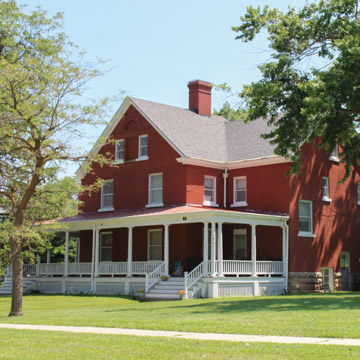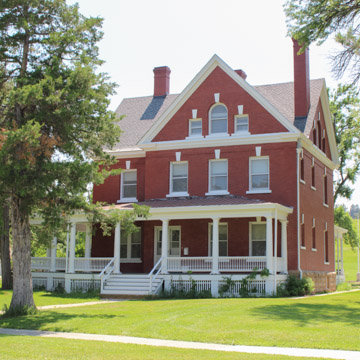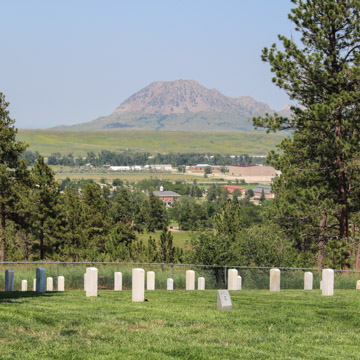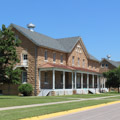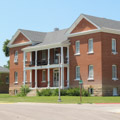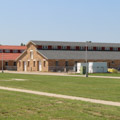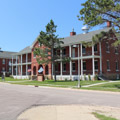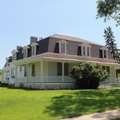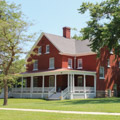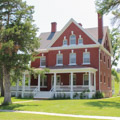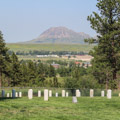In August 1878, Camp Ruhlen was established two miles northwest of Bear Butte in response to attacks on white settlers by nearby Sioux Indians, who were retaliating against the illegal invasion of the Black Hills. Its strategic location at the natural gap in the outer rim of the Black Hills, near the hunting grounds of the Sioux and the confluence of the Bismarck, Fort Pierre, and Sidney pioneer trails, enabled troops to maintain peace on the western Dakota frontier. The camp was officially designated Fort Meade, in honor of General George G. Meade, on December 31, 1878. It was primarily a cavalry post during its 66-year history, although infantry and artillery troops were stationed here at various points in time.
The fort’s oldest surviving building is the Old Commissary, a wood-framed structure erected in 1879. An 1896 building campaign resulted in the addition of twenty-five sets of officer quarters, a quartermaster’s storehouse, a new commissary, band quarters, a post exchange, ten stables, a granary, a hospital, and a sawmill. Many of these structures encircled the central parade ground. The only construction permitted on the parade ground itself was a bandstand. Along the edge of the post were a cluster of non-commissioned officers’ quarters. A chapel and post riding hall were added a few years later. The fort was built to accommodate a regiment of ten full troops of cavalry.
Much of these frame structures were clad in brick and stone circa 1900 to 1910, and also during a 1930s Works Progress Administration project to expand the campus. The early-twentieth-century architecture featured classical design elements in brick, wood, and sandstone, and included seven single and two double barracks, seven sets of officer quarters, a guardhouse, a bakery, and eight cavalry stables (each of these stables, of which two remain, housed 86 horses).
The fort was inactivated after 1910 and was without a garrison until 1917, when a unit of the South Dakota National Guard stationed there for training. In 1924, the Fourth U.S. Cavalry was assigned to the post; they guarded President Calvin Coolidge during the summer of 1927, when Coolidge was in the Black Hills. From 1933 to 1935, Fort Meade was headquarters for South Dakota’s CCC camps. During World War II, the post again housed troops, and in the fall of 1944 served as a prisoner-of-war camp that detained approximately 600 Germans. That year, the fort was transferred to the Veterans Administration for use as a hospital, which it remains today. The modern hospital complex was built north of the parade ground. Though no longer an active military base, Fort Meade remains a training site by the 196th Regiment for Officer Candidate School.
Two interesting things associated with Fort Meade are of note. The first is that Comanche, the only surviving horse of the Battle of the Little Bighorn (in which Lieutenant Colonel George Armstrong Custer was killed), pastured here from 1879 to 1888; a taxidermist preserved the horse after its death and it is now on display at the University of Kansas in Lawrence. The second item of note is that Fort Meade was the first military institution to play The Star Spangled Banner, which did not become the national anthem until 1930.
The Fort Meade National Cemetery is located south of the main grounds on the hillside. There are over 200 burials in this cemetery, which was closed for additional burials in 1948 when the nearby Black Hills National Cemetery opened.

